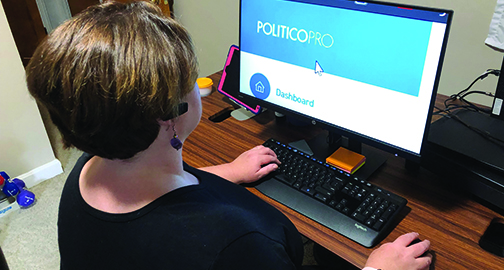"Technology and availability of accommodations have changed over the years. I don’t think I could have done the same job I’m doing now if it were 25 years ago. Technology has enabled me to be a productive person." —White female in her 40s who is congenitally visually impaired
The 323 participants were asked how they learned to use AT. Though 63 participants said they had never received formal training with AT and 16 were self-taught, the remaining participants reported one or more ways in which they initially learned to use AT including:
- By requesting to learn how to use the new technology (n=143)
- As part of K-12 education (n=137)
- When a VR staff member recommended the training (n=92)
- When an employer introduced new technology (n=69)
- When the individual experienced a significant decrease in vision (n=41)
- When the individual could not find employment and sought out training (n=39)
- As an adult when first experiencing vision loss (n=37)
- At college or a learning center (n=10)
When asked who provided their AT instruction, 300 participants selected at least one of the following in a multiple answer question:
- VR staff (n=130)
- Teacher of students with visual impairments (n=127)
- Staff at an agency or training center for those with vision loss (n=83)
- Staff at an AT company (n=65)
- Another individual who was blind or had low vision (n=62)
- Self-taught (n=34)
Other ways in which participants learned to use AT included receiving training from other professionals such as librarians and their employer’s internal IT department staff.
Learning to use AT is one thing but improving one’s AT skills takes commitment and time on the part of the individual. Some participants indicated using resources from specific agencies such as Hadley and Vision Forward to improve their AT skills. Participants also reported that they read AT newsletters, such as Top Tech Tidbits for Thursday and AFB’s AccessWorld.
Participants were provided a list of resources to use to keep their AT knowledge current. They were asked to rate the usefulness of each resource from "Strongly disagree" to "Strongly agree." The number of participants who rated each resource as "Agree" or "Strongly agree" are:
- Podcasts of other AT users (n=122)
- Podcasts from AT companies (n=106)
- Reading manuals (n=146)
- Videos/webinars by AT users (n=125)
- Online discussions about AT (n=111)
- Videos/webinars by AT companies (n=145)
- Conventions or activities of consumer organizations (n=99)
When asked about other resources that may increase their AT skills, participants reported wanting in-person training (n=72), with 13 specifically wanting one-on-one training and 6 asking for small group training. When participants mentioned a reason for wanting in-person training, they said they wanted to have hands-on experience with products, or they wanted to more easily have their questions answered. This format would allow them to learn specific skills relevant to their current work needs.
Like most employees, people who are blind or have low vision use a variety of means to keep their technology skills sharp. However, if users learn to use new assistive technology at the employer’s request, the employer is obligated to ensure employees have appropriate training to do their essential job functions.

